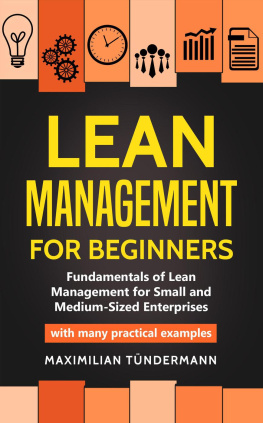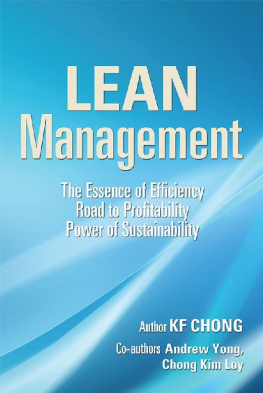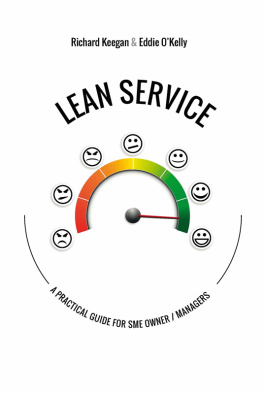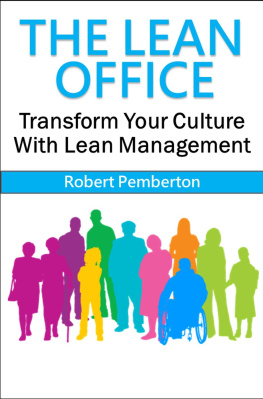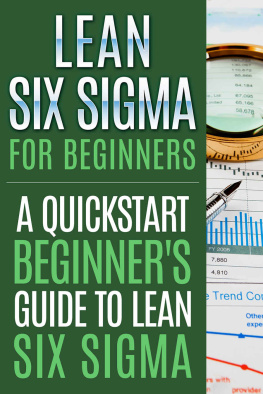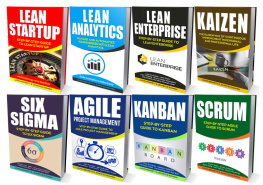Maximilian Tündermann - Lean Management for Beginners: Fundamentals of Lean Management for Small and Medium-Sized Enterprises--With many Practical Examples
Here you can read online Maximilian Tündermann - Lean Management for Beginners: Fundamentals of Lean Management for Small and Medium-Sized Enterprises--With many Practical Examples full text of the book (entire story) in english for free. Download pdf and epub, get meaning, cover and reviews about this ebook. year: 2019, publisher: Maximilian Tündermann, genre: Business. Description of the work, (preface) as well as reviews are available. Best literature library LitArk.com created for fans of good reading and offers a wide selection of genres:
Romance novel
Science fiction
Adventure
Detective
Science
History
Home and family
Prose
Art
Politics
Computer
Non-fiction
Religion
Business
Children
Humor
Choose a favorite category and find really read worthwhile books. Enjoy immersion in the world of imagination, feel the emotions of the characters or learn something new for yourself, make an fascinating discovery.
- Book:Lean Management for Beginners: Fundamentals of Lean Management for Small and Medium-Sized Enterprises--With many Practical Examples
- Author:
- Publisher:Maximilian Tündermann
- Genre:
- Year:2019
- Rating:4 / 5
- Favourites:Add to favourites
- Your mark:
Lean Management for Beginners: Fundamentals of Lean Management for Small and Medium-Sized Enterprises--With many Practical Examples: summary, description and annotation
We offer to read an annotation, description, summary or preface (depends on what the author of the book "Lean Management for Beginners: Fundamentals of Lean Management for Small and Medium-Sized Enterprises--With many Practical Examples" wrote himself). If you haven't found the necessary information about the book — write in the comments, we will try to find it.
Lean Management for Beginners: Basics of Lean Management for Small and Medium-Sized Enterprises - with many practical examples
Implementation of Lean Management in companies
Do you know the promising advantages of Lean Management?
Do you want to know how Lean Management can also work for small and medium-sized companies?
Do you know why most companies fail to implement Lean Management?
Using practical examples, learn how Lean Management really works in companies.
When the founder of an Indian bank wondered why fewer and fewer customers were applying for credit, he looked at the process that regulated the mortgage application. President Jairam Sridharan found out that such a request went through a total of 30 hands. No wonder no one wanted to wait that long. Axis Bank was looking for solutions and ultimately found them not through technology but through philosophy: lean management. This Japanese production method is now also used in management and the service industry. The core is that nothing should be wasted. The word lean means slim, and in most cases companies and enterprises are actually slimmed down.
Size doesnt matter, for small and medium-sized companies it may even be easier to slim down because youre not that big. However, streamlining does not necessarily mean saving costs, dismissing or outsourcing personnel, or closing business areas. The difference between the classic lean approach and the lean approach is that, it is process oriented. Leaning is only done where it is necessary to improve the process. It is also possible that only the processes themselves may be changed, without really incurring costs.
Learn from this helpful guide ...
... what constitutes the remarkable history of lean management
... what interesting facets does the Lean philosophy have?
... what basic methods exist in Lean Management
... the applications of Lean Management
... what the term Lean Leadership stands for
... what characterizes a lean start-up
... what success and failure in Lean Management depends on
... and much more!
Secure your chance today and learn the basic steps for the successful implementation of Lean Management - explained with many practical examples.
Maximilian Tündermann: author's other books
Who wrote Lean Management for Beginners: Fundamentals of Lean Management for Small and Medium-Sized Enterprises--With many Practical Examples? Find out the surname, the name of the author of the book and a list of all author's works by series.

